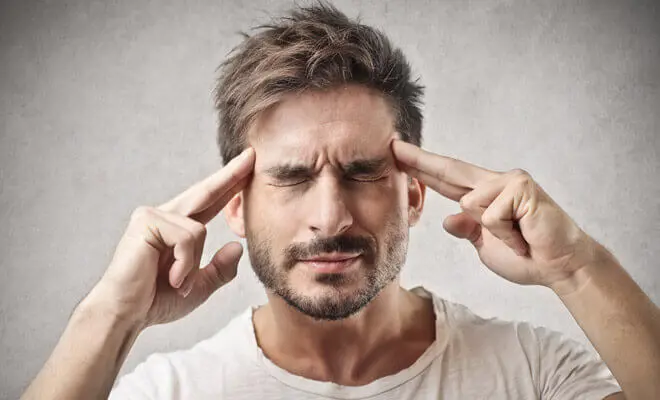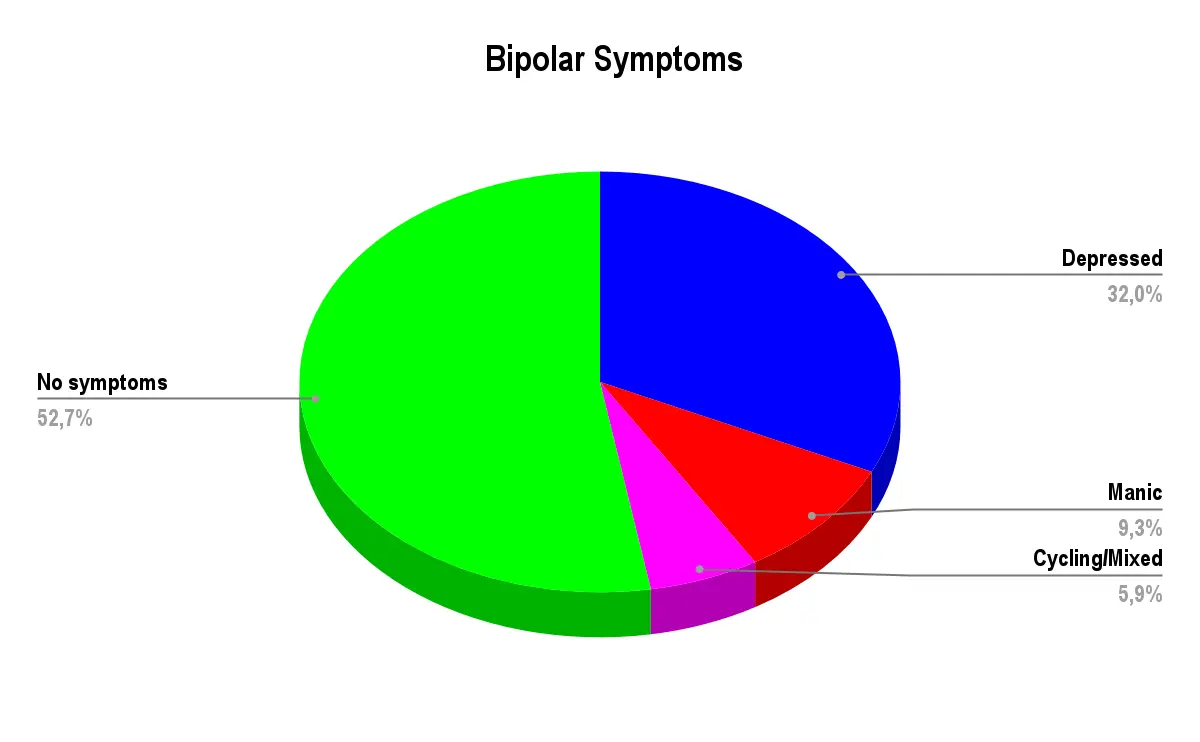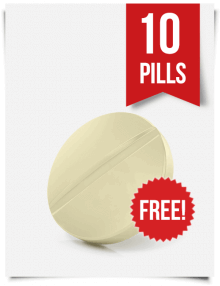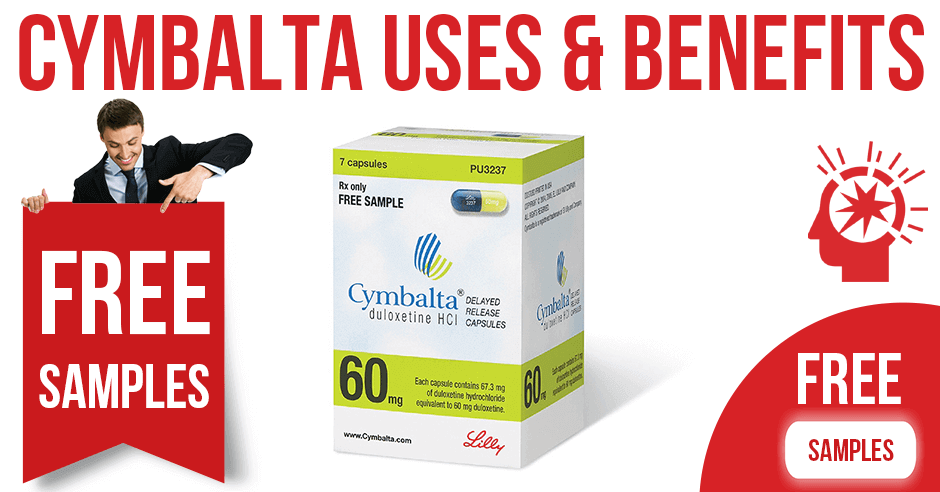Cymbalta Uses and Benefits
Known in the pharmaceutical market since 2004, the antidepressant Cymbalta has a mixed reputation. Its spectrum of action is wide and the response of patients is different. Let’s review all the cases when Cymbalta is appropriate.
Cymbalta was officially given a green light for the treatment of numerous illnesses. The commercials on TV promoted its power for pain relief and depression with the slogan «Cymbalta can help».
It was also said that the drug has a number of side effects, nevertheless, the advertising ensures its effect.
- What Is Cymbalta?
- What Is Cymbalta Used For?
- For Major and Bipolar Depressive Disorders
- Anxiety
- Cymbalta for Chronic Muscle and Joint Pain
- Fibromyalgia
- Migraines and Headaches
- Does Cymbalta Help with Weight Loss?
- Will Cymbalta Help Me Sleep?
- Cymbalta Off Label Uses
- Precautions and Warnings
- Cymbalta Alternatives
The stories of real users do not look that attractive. The vast majority of patients complain that Cymbalta costs too much. Many people had to stop the preparation’s intake because its side effects were unbearable, noting withdrawal symptoms. Other reviews tell about the suicide risks while being on the Cymbalta treatment course, and consider it as one of the most dangerous drugs.
So, is Cymbalta too good to be true? Those who plan to use this drug should examine its features in detail, and this article will help you do so.
What Is Cymbalta?
Cymbalta (trade name: duloxetine) is used to treat anxiety-depressive disorders. The first publications about Cymbalta by Eli Lilly & Co research scientists appeared in 1988, and it was a stepping stone in duloxetine elaboration. The medicinal product has been certified by the Food and Drug Administration (FDA) for the following ailments:
- August 4, 2004 for depression (brand name Cymbalta);
- September 7, 2004 for diabetic peripheral neuropathy;
- February 26, 2007 for generalized anxiety disorder (GAD);
- November 30, 2007 for maintenance therapy of clinical depression;
- June 16, 2008 for fibromyalgia;
- November 30, 2009 for maintenance therapy of GAD;
- November 5, 2010 for chronic musculoskeletal pain.
Generic of Cymbalta has been certified by the FDA under the name duloxetine hydrochloride. Generics are produced by global US and Canadian pharmacies, although Indian products have taken the leading positions.
What is the generic name for Cymbalta: Irenka; Dulonix; Yentreve; Dulomax; Ariclaim; Dulane; Xeristar; Dumore; Duzela; Dulot; Verlox; Duloxyl; Sympta; Dimorex; Ulozet; Deneurone; Symbal; Nudep; Sylonex; DXT; DLX; Duzac; Duxet; Dureep; Dutin; DUONEX; C-Pact; Dulx; Dultin; Combac; Duloxit; Duloxee; Dulotrac; Dulotin; Dulot; Dulok; Dulojoy; Dulife; Dulex; Detine; Delok.
Authorized generic drugs are identical to the brand name products.
Is Cymbalta an Antidepressant?
Cymbalta is an antidepressant that belongs to serotonin-norepinephrine reuptake inhibitors (SNRIs) class of drugs. To answer the question, is Cymbalta an antipsychotic, the answer is no, as these are the drugs with different actions.
Scientists are sure that neurotransmitter imbalance is the underlying reason for many mental problems. Serotonin and norepinephrine are made by the brain and released by the brain nerves. The antidepressant effect of duloxetine consists in activation of serotonergic and noradrenergic action in the central nervous system (CNS), inhibiting serotonin and norepinephrine reuptake by the nerves after they have been released. Since uptake is an important process for removing released neurotransmitters and terminating their actions, the reduced uptake caused by duloxetine enhances the effect of serotonin and norepinephrine in the brain. Increased levels of the neurotransmitters help to regulate mood and block painful signals that travel through the brain.
The mechanism responsible for its effectiveness in treating pain is unclear, but it is also thought to involve its effects on serotonin and norepinephrine in the brain.
Cymbalta improves mood, sleep, appetite, general well-being, and energy levels, decreasing nervousness. In addition to depression, it may be prescribed for treating anxiety and reducing painful syndromes.

- dismal mood;
- loss of interest in things which a patient found enjoyable;
- appetite and weight changes;
- significant sleep problems (excessive or inadequate rest);
- intense restlessness or retardation;
- quick tiredness;
- feelings of worthlessness or guilt;
- poor concentration;
- suicidal attempt or ideation.
Cymbalta is prescribed for the treatment of a dysphoric mood that remains every day for two weeks or longer and affects daily performance.
What Is Cymbalta Used For?
Cymbalta provides positive effects for patients with depressive states presented with painful physical symptoms. The drug is primarily used for FDA approved disorders:
- Major depressive disorder (MDD), another name for depression. The appropriate dosage is 40 mg-60 mg daily, but no more than 120 mg. Geriatric dosage starts from 20 mg and may be increased up to 30 mg-60 mg gradually.
- Diabetic neuropathy (diabetic peripheral neuropathic pain). The target dose is 60 mg a day.
- GAD that lasts for 6 months or longer. The appropriate dose is 30 mg-60 mg (not to exceed 120 mg a day). Safety and effectiveness for children aged under 7 has not been studied, though adolescents may be prescribed a standard dose for this disorder.
- Fibromyalgia. The dose for this ailment is 60 mg a day.
- Chronic musculoskeletal pain, including osteoarthritis and chronic lower back pain. The dose is up to 60 mg daily.

Cymbalta benefits are usually seen within 1 – 4 weeks of therapy or longer. Patients should continue taking it even when they feel relief. The preparation rejection should be done gradually because duloxetine causes withdrawal symptoms. It does not require any diet changes. Overdosing leads to unwanted reactions and demands urgent medical attention.
For Major and Bipolar Depressive Disorders
Since depression affects all the body systems, antidepressant therapy should relieve both the emotional and physical symptoms of depression. Cymbalta showed its efficiency for unipolar depressive disorder, reducing the severity of depression symptoms, as well as anxiety and somatic symptoms. In fact, the physical symptoms are presented in 80% of depressive patients. These include sleep disruption, fatigue, discomfort, and appetite disturbance. Somatic symptoms occur in nearly all body systems and worsen non-psychiatric conditions. Back and chest pain are often the forerunners of severe depression.
Comparative data among selective serotonin reuptake inhibitors (SSRI) and SNRIs confirm that the last ones, such as duloxetine, show greater efficacy. The core difference lies in the safety and tolerability advantages. SSRI drugs are less likely to improve physical symptoms, enhancing well-being feelings and social functioning instead.
Duloxetine helps to overcome the severity of overall pain, including headaches, back and shoulder pain that interfere with daily activities. A decreased amount of time in pain while awake improves the general quality of life in depressed patients, treating both the emotional and the painful physical symptoms.

Bipolar disorder is often undetected, with the most common misdiagnosis being unipolar depression. Cymbalta is not certified for bipolar disorder treatment, but it may be prescribed off-label. Patients with mania need careful medical monitoring during therapy, but the total effect of duloxetine in patients with bipolar depressive disorder is not known.
While tricyclic antidepressants (TCAs) may increase the risk of switch rate from depression to mania, duloxetine was associated with a low incidence of mania or related symptoms in patients with MDD.
Cymbalta can be used in hypomania treatment (the mood state that is elevated above normal, but not so extreme as to cause impairment) in quality of mood stabilizer.
Duloxetine is used for symptomatic treatment of menopause (hot flashes, night sweats) and mood swings in postmenopausal women.
Anxiety

Basically, SSRIs are widely used in the anxiety therapy because they were officially certified for this disorder and seem to show better effectiveness. However, the drugs of this class often causes side effects. That becomes a problem for some users. Although patients with GAD respond to SSRIs, only a small percentage of people get positive results with this therapy.
Since 90% of anxious patients also experience mood problems, duloxetine is especially useful. Its effectiveness for anxiety symptoms was clearly seen in symptoms associated with MDD. Improvement of GAD symptoms were noticed within the first few weeks of taking the medication. Clinical trials showed that duloxetine can help with anxiety: it enhances mood, reduces anxiety, painful physical symptoms, and pain severity. It causes the rapid relief of anxiety symptoms associated with depression.
This drug consistently reduces the health problems associated with GAD, as well as enhances patients’ quality of life and well-being. Cymbalta can be used for social anxiety disorder treatment.
Children younger that 18 y.o. are not usually prescribed duloxetine. If a doctor finds this medication the best for treating a child’s condition, it may be used exceptionally.
Cymbalta for Chronic Muscle and Joint Pain

Chronic pain tortures a sufferer at least 6 months by definition. It can have an underlying disease, but quite often the cause is uncertain.
In November 2010, duloxetine was certified for the treatment of chronic musculoskeletal pain that includes joint pain and chronic low back pain. The last one is the most common form of musculoskeletal pain: three-quarters of the population will endure it at some stage of life. Osteoarthritis is a widespread form of arthritis in the United States which occurs most often in senior people. Finding an effective treatment for arthritis is highly relevant. Cymbalta can be used for rheumatoid arthritis, neck pain, for neuropathy treatment, and for sciatica nerve pain.
The fact that chronic back pain lasts so long, combined with the lack of knowledge of what’s causing it, can make it extremely difficult to endure. Treating the emotional side of pain is one way Cymbalta helps people with chronic pain.
Duloxetine is used for chronic pain and has helped about 30 million people who have used it. It can be used effectively as a monotherapy for patients purely with chronic musculoskeletal pain without any accompanying depression or anxiety, although the precise mechanisms by which duloxetine contributes to alleviation of chronic musculoskeletal pain remains uncertain.
Older adults with severe osteoarthritis pain are more likely to take analgesics than those with less severe pain. Clinical trials showed that duloxetine combined with another analgesic agent may be useful for patients with painful musculoskeletal conditions who do not respond satisfactorily to mono-therapy. Patients with inefficient conditioned pain modulation may respond better to duloxetine.
Fibromyalgia
Fibromyalgia is a perplexing and often disabling illness that millions of Americans suffer from. Cymbalta offers hope to those living with the pain, improving the patients’ quality of life and overall functioning.
The long period of pain is prompted by troubles with diagnosis establishment, and for that reason, patients with fibromyalgia sustain widespread pain, as well as tenderness in the muscles and soft tissue. The root cause is usually linked to abnormalities in the brain’s neurotransmitters, although clinical tests on patients with MDD and without it showed that Cymbalta’s effect on pain works irrespective of mood.

Canada’s Queen’s University researchers have discovered that Cymbalta can be successfully combined with an anticonvulsant drug (pregabalin). The results demonstrate recovery from fibromyalgia symptoms, providing pain relief and improving the overall quality of life. Therefore, the duloxetine-pregabalin combination works better for pain management than a single-drug therapy due to different active ingredients and their pharmacological actions.
Physicians also may add other medical preparations for pain and fatigue reducing and correcting the sleep schedule, such as analgesics (tramadol), muscle relaxants (cyclobenzaprine), and nootropics (Modafinil).
Migraines and Headaches
Tension headaches and migraines are serious problems for a major proportion of people in the modern world. Cymbalta is not certified for migraines, and there is little evidence that proves its effectiveness for this disorder. Nevertheless, since depressive and anxiety disorders may negatively impact the peripheral and central mechanisms and promote migraines, duloxetine seems to help especially in cases when depressive symptoms and high-intensity tension headaches are concomitant.
How effective is Cymbalta for migraines? It appears to be more efficient than some pain relievers (Effexor, Botox, Depakote), but a long period of its usage is not suggested due to the high risk of serious side effects. It can be also effective in migraine prevention. Clinical tests have proven that duloxetine in high doses is good for migraine prophylaxis if depressive symptoms are absent.
Cymbalta can be a part of a complex anti-migraine course. To reduce the risk of serotonin syndrome, which often occurs in the beginning of the therapy or after decreasing the dose of a triptan or antidepressant drug intake, a patient should strictly follow the prescribed schedule.
Does Cymbalta Help with Weight Loss?

What is Cymbalta effect for weight loss:
- Decreasing of appetite. Cymbalta alleviates the signs of depression in those who overeat during depression, eliminating the mechanism of overeating.
- Diarrhea is one more unwanted reaction that leads to weight loss, though it is usually short-term. Long lasting stomach problems are a signal that Cymbalta should be replaced.
- Speeds up the metabolism due to norepinephrine stimulatory effect.
- Sickness and vomiting. Long lasting symptoms (lasting weeks) means that a patient cannot tolerate Cymbalta.
An improved appetite is associated with improved mood and may lead to weight gain which is a less common adverse event of duloxetine consumption (1% of patents) and may be also promoted by high-fat food. This side effect can be easily reduced by eating a balanced diet.
There are several factors that promote weight changes during Cymbalta course:
- Dosage. Patients who take higher doses of duloxetine have a higher risk of weight changes due to greater influence over natural homeostatic functions.
- Individual factors. Drugs are not always the main reason for weight changes. Genetics, hormones, ration size, physical activities, quality of sleep, and stress factors may seriously impact weight changes except Cymbalta.
- Therapy duration. An extended period usually implies increased doses and gaining weight subsequently. Short-term duloxetine courses usually go smoothly without significant weight changes.
- Drug interaction. For instance, stimulant drugs taken along with Cymbalta promote weight loss, while sedative preparations lead to weight gain. Consult with a physician regarding each particular drug.
There is no way to know in advance how the organism will react to the drug until it is taken for some time. However, duloxetine is generally considered as «weight neutral». The vast majority of people do not report any significant weight changes and generally there is very little possibility that Cymbalta can really affect weight.
Will Cymbalta Help Me Sleep?

- avoid alcohol consumption due to increased risk of duloxetine side effects;
- duloxetine affects concentration, therefore postpone activities that require a lot of focus (driving a car, riding a bike, operating machinery) until you know how the drug affects you;
- the drug may affect the work of brain, so intellectual tasks may become complicated;
- duloxetine may affect eyesight;
- it is better to suspend sport performances pending clarification of side effects.
Cymbalta may cause sleep problems (for instance, unusual dreams). Those who have been taking Cymbalta for 30 days or longer and still suffer from drowsiness should visit a doctor and discuss the situation individually.
Reducing sleepiness through excessive caffeine consumption is strongly discouraged. High doses of caffeine combined with Cymbalta may bring on serotonin syndrome which include:
- high fever;
- unrest;
- nervousness;
- shiver;
- sweat;
- stomach upsets;
- fast heartbeat;
- sudden, involuntary jerking of a muscle or group of muscles.
High caffeine consumption is inadvisable for panic attacks and GAD condition, as it may bring on mania and complicate the underlying disorder. Limiting caffeine uses during the Cymbalta treatment course is highly suggested.
Cymbalta Off Label Uses

Cymbalta is also used for:
- back pain;
- chronic fatigue syndrome;
- stress urinary incontinence (approved in Europe in 2004).
Cymbalta can not be used for insomnia, as it is one of its side effects.
Precautions and Warnings
Is Cymbalta safe is a legitimate question. Patients are advised to consider the warnings and precautions associated with this drug before taking it in order to avoid health complications. Here are a few useful things to remember when taking Cymbalta:
- It may cause sudden blood pressure swings, vertigo, and swooning when standing up, especially in the beginning of the therapy. If a patient feels drowsiness at any time of a day, he should lie down for a while until the symptoms pass. It is necessary to monitor the blood pressure, especially during the first month of therapy.
- Depression and other mental disorders are associated with an increased risk of suicidal thoughts, self-harm, and suicide attempts. If a patient has these obsessive thoughts, urgent medical consultation is required.
- Cymbalta may cause an abnormal restlessness feeling. Medical advice is highly suggested.
- Antidepressants may cause hyponatremia (low blood sodium), especially in seniors. Monitoring the sodium level is advisable.
- The abrupt discontinuation of Cymbalta causes symptoms similar to opiate withdrawal. Stop the preparation gradually, strictly following the medical instructions.

- problems with erection and ejaculation;
- pain in testicles;
- low libido.
Women who take Cymbalta may experience:
- abnormal vaginal bleeding;
- difficulty reaching orgasm;
- low libido.
Both males and females may see growth in their breasts and some milk flow.
Duloxetine does not affect male fertility. Females need a good contraception while taking the medicine because its effect on a developing baby is negative. Nursing mothers should not use the drug because the drug compounds are passed on to the baby through breast milk and can cause such serious conditions as persistent pulmonary hypertension, blue vision, and fast breathing in newborns.
Females who get pregnant while on a duloxetine treatment course should appeal for medical consultation regarding changing or stopping the preparation intake. Women who are planning pregnancy should choose another antidepressant.
Is Cymbalta Dangerous?
As most prescription drugs, Cymbalta is not for everyone and has side effects. The drug is not recommended to the following groups of people:
- under 18 y.o.;
- allergic individuals;
- with liver illnesses;
- with kidney problems;
- hypertension sufferers;
- monoamine oxidase inhibitors (MAOI) users (Cymbalta can be taken within 2 weeks after ending MAOI course);
- fluvoxamine, ciprofloxacin, or enoxacin users;
- with inherited metabolic disorders (fructose intolerance, glucose-galactose malabsorption, or sucrase-isomaltase insufficiency).

- senior and young adult age individuals;
- manic depression patients with suicidal thoughts and/or attempts;
- people who suffer a stroke, heart problems, epilepsy;
- patients with bleeding tendency;
- people with eyesight problems.
Cymbalta causes unwanted reactions. The table below represent the most reported ones.
|
Very common |
Common | Less common |
Rare |
|
Sickness |
Weight loss | Weight gain | Risen blood cholesterol level |
| Weakness |
Hypertension |
||
|
Hot flushes |
Blood pressure drops when changing position |
||
|
Migraine |
Yawning | Increased heart rate | Abnormal heartbeat |
| Insomnia |
Increased blood sugar |
||
|
Excessive sweating |
Eyesight problems | Convulsions | |
| Blurred vision |
Problems with urination |
||
|
Shiver |
Cold extremities |
Glaucoma |
|
|
Drowsiness |
Paresthesia (pins and needles) |
Ejaculation problems | |
| Taste disorders |
Attention problems |
Mania |
|
|
Abnormal heartbeat |
Poor quality of night rest |
||
| Abdominal pain |
Willis-Ekbom disease (restless legs syndrome) |
Aggressive behavior |
|
|
Vertigo |
Various stomach problems | Throat tightness | |
| Emesis | Bloody nose |
Hallucinations |
|
|
Tinnitus (ringing in the ears) |
Ecchymosis (bruising) |
||
|
Thirst |
Dermatologic problems |
Sun-sensitivity reaction | Halitosis (bad breath) |
|
Muscles spasms, pain or tightness |
|||
|
Agitation |
Hepatitis | Hypothyroidism | |
|
Impotency |
The table is provided for information purposes only and does not include all adverse events of Cymbalta. Contact a medical center for a detailed consultation.
Cymbalta Alternatives
In our online pharmacy ModafinilXL you can purchase nootropics which may become a good addition to Cymbalta therapy and significantly help to shorten and improve treatment success. Provigil (modafinil) and Nuvigil (Armodafinil) both promote wakefulness and help to correct the sleeping schedule by altering the natural chemicals in the brain.
These psychostimulants are approved by the FDA for treating narcolepsy, obstructive sleep apnea or hypopnea syndrome, and shift work disorder. Modafinil can demonstrate a better clinical effectiveness in being able to treat, for instance, chronic fatigue syndrome, without the serious side effects which Cymbalta causes.
Consult with a doctor regarding dual duloxetine-nootropic or mono nootropic therapy and welcome to our pharmacy.

 Order Free Artvigil 150 mg Armodafinil 10 Samples Online
Order Free Artvigil 150 mg Armodafinil 10 Samples Online Generic Modalert 200mg Modafinil 10 Samples Pack
Generic Modalert 200mg Modafinil 10 Samples Pack
